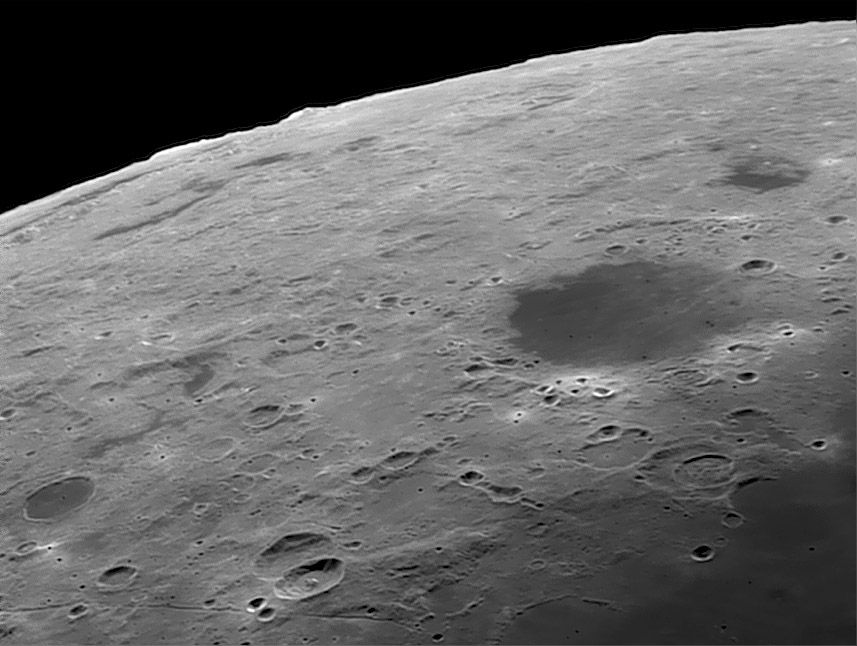February 23, 2021
Instantaneous Time Markers
Originally published July 7, 2011

image by Jocelyn Sérot, France]
Amateurs commonly observe lunar craters and basins, but many planetary scientists, following Gene Shoemaker and his US Geological Survey colleagues, concentrate on the debris that came out of those holes. We may not know when a particular impact crater formed but we can be confident that features covered by its rays and secondary craters are older. Basins, as the very largest impact features, send the greatest amount of debris across the luanr surface. Basin ejecta may extend in continuous deposits half way across the Moon. That makes a fantastic time marker allowing scientists to separate every feature on the Moon as being younger or older than each basin-forming event. The youngest basin time marker comes from Orientale - seen here at the horizon - and everthing on this image is covered by its ejecta or digs into it. For example, the two-ring impact basin Grimaldi is older than Orientale, but the dark lava fill overflows ejecta and is younger. Sirsalis, at bottom left, and its long rille cut into to the ejecta and thus are younger than the Orientale Basin. You can make similar observations for each crater and each basin, gradually building sequences of events all across the Moon. That is what the USGS Moon mappers did 40-50 years ago to determine a stratigaphic column. Now with LRO and other much better resolution data these temporal sequences can be re-examined.
Chuck Wood
Technical Details
2011-06-26, 4h34 UT, 8" Newton reflector F/5, Barlow 3x, IR Pass 742nm, DMK 31. Processing : Registax v6 (600 fr/3000).
Related Links
Rükl plate 39
Yesterday's LPOD: Another Moon
Tomorrow's LPOD: No Room for Strikes
COMMENTS?
Register, Log in, and join in the comments.



